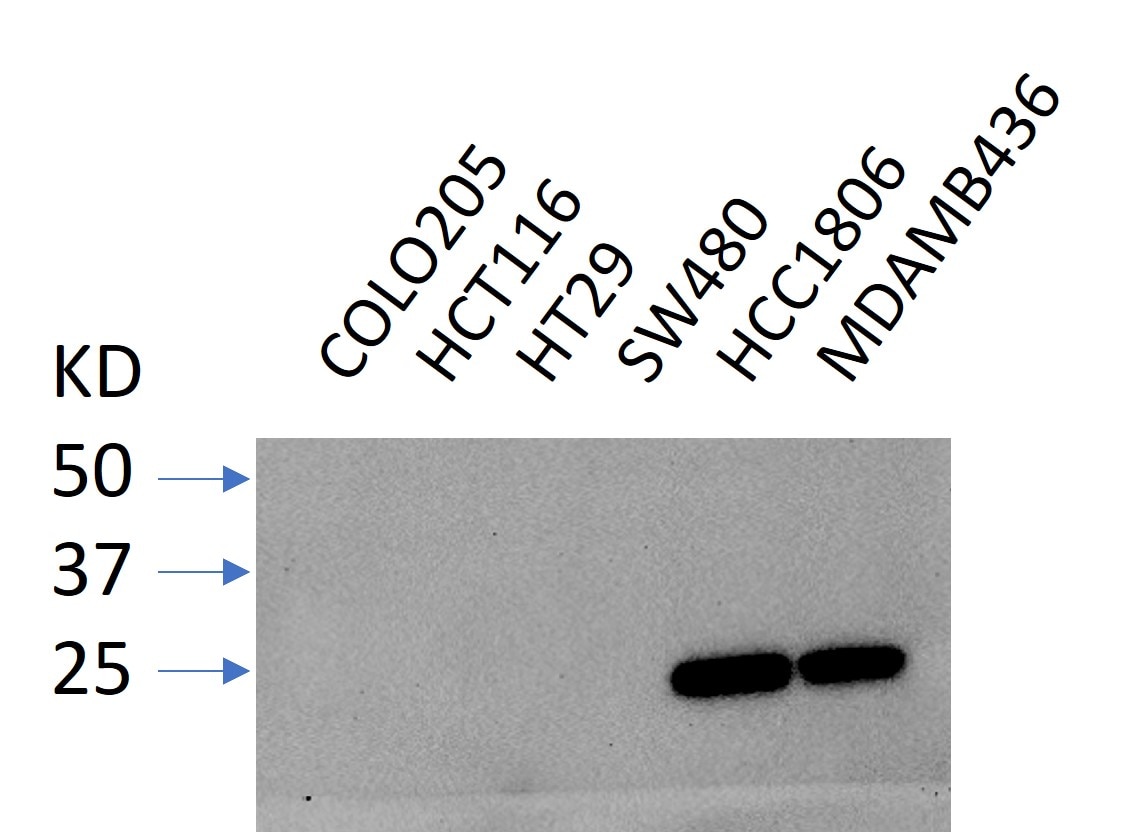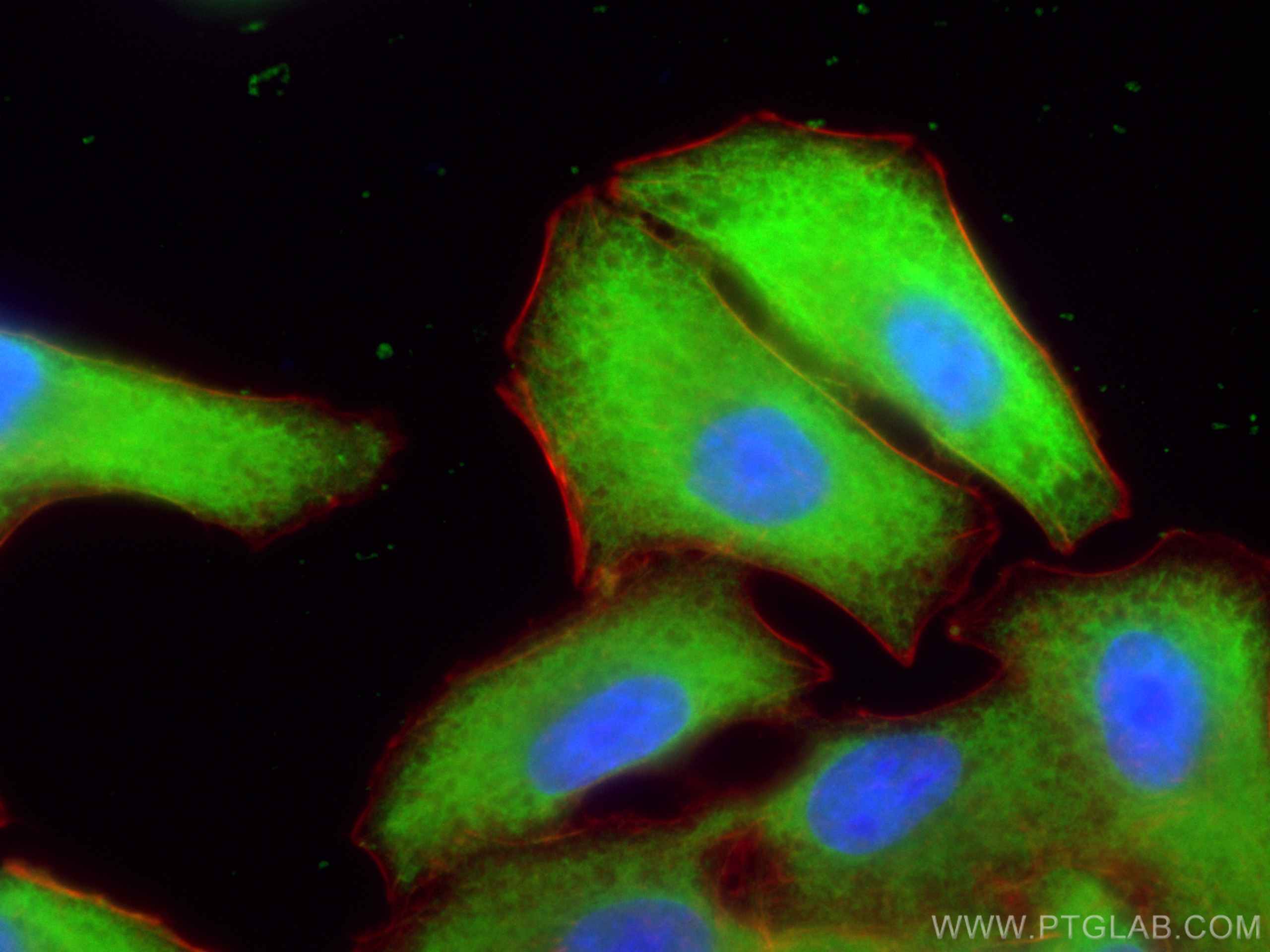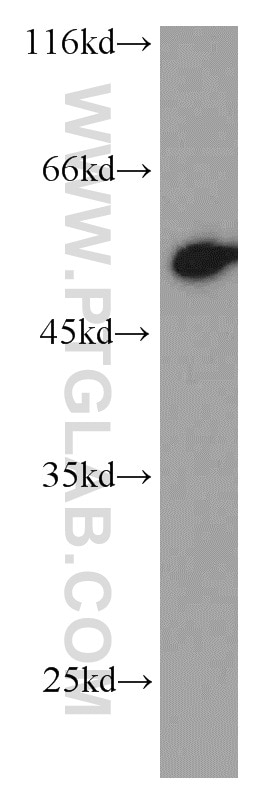- Featured Product
- KD/KO Validated
UCHL1/PGP9.5 Polyklonaler Antikörper
UCHL1/PGP9.5 Polyklonal Antikörper für FC, IF, WB, ELISA
Wirt / Isotyp
Kaninchen / IgG
Getestete Reaktivität
human, Maus, Ratte und mehr (4)
Anwendung
WB, IHC, IF, FC, CoIP, ELISA
Konjugation
Unkonjugiert
Kat-Nr. : 14730-1-AP
Synonyme
Galerie der Validierungsdaten
Geprüfte Anwendungen
| Erfolgreiche Detektion in WB | A549-Zellen, C6-Zellen, Maushirngewebe, NCI-H1299-Zellen, Neuro-2a-Zellen, Rattenhirngewebe, SH-SY5Y-Zellen |
| Erfolgreiche Detektion in IF | A549-Zellen, Maushirngewebe |
| Erfolgreiche Detektion in FC | C6-Zellen |
Empfohlene Verdünnung
| Anwendung | Verdünnung |
|---|---|
| Western Blot (WB) | WB : 1:5000-1:50000 |
| Immunfluoreszenz (IF) | IF : 1:200-1:800 |
| Durchflusszytometrie (FC) | FC : 0.40 ug per 10^6 cells in a 100 µl suspension |
| It is recommended that this reagent should be titrated in each testing system to obtain optimal results. | |
| Sample-dependent, check data in validation data gallery | |
Veröffentlichte Anwendungen
| KD/KO | See 4 publications below |
| WB | See 20 publications below |
| IHC | See 22 publications below |
| IF | See 51 publications below |
| ELISA | See 2 publications below |
| CoIP | See 3 publications below |
Produktinformation
14730-1-AP bindet in WB, IHC, IF, FC, CoIP, ELISA UCHL1/PGP9.5 und zeigt Reaktivität mit human, Maus, Ratten
| Getestete Reaktivität | human, Maus, Ratte |
| In Publikationen genannte Reaktivität | human, Affe, Hausschwein, Hund, Maus, Ratte, nicht-humane Primaten |
| Wirt / Isotyp | Kaninchen / IgG |
| Klonalität | Polyklonal |
| Typ | Antikörper |
| Immunogen | UCHL1/PGP9.5 fusion protein Ag6490 |
| Vollständiger Name | ubiquitin carboxyl-terminal esterase L1 (ubiquitin thiolesterase) |
| Berechnetes Molekulargewicht | 25 kDa |
| Beobachtetes Molekulargewicht | 27 kDa |
| GenBank-Zugangsnummer | BC000332 |
| Gene symbol | UCHL1 |
| Gene ID (NCBI) | 7345 |
| Konjugation | Unkonjugiert |
| Form | Liquid |
| Reinigungsmethode | Antigen-Affinitätsreinigung |
| Lagerungspuffer | PBS mit 0.02% Natriumazid und 50% Glycerin pH 7.3. |
| Lagerungsbedingungen | Bei -20°C lagern. Nach dem Versand ein Jahr lang stabil Aliquotieren ist bei -20oC Lagerung nicht notwendig. 20ul Größen enthalten 0,1% BSA. |
Hintergrundinformationen
UCHL1(Ubiquitin carboxyl-terminal hydrolase isozyme L1) is a member of a gene family whose products hydrolyze small C-terminal adducts of ubiquitin to generate the ubiquitin monomer. Expression of UCHL1 is highly specific to neurons and to cells of the diffuse neuroendocrine system and their tumors. It is present in all neurons(PMID: 6343558). This protein is present in brain at concentrations at least 50 times greater than in other organs and is a major protein component of neuronal cytoplasm (PMID:7217993). And UCHL1 is a Parkinson's disease susceptibility gene (PMID:15048890).
Protokolle
| Produktspezifische Protokolle | |
|---|---|
| WB protocol for UCHL1/PGP9.5 antibody 14730-1-AP | Protokoll herunterladen |
| IF protocol for UCHL1/PGP9.5 antibody 14730-1-AP | Protokoll herunterladen |
| FC protocol for UCHL1/PGP9.5 antibody 14730-1-AP | Protokoll herunterladen |
| Standard-Protokolle | |
|---|---|
| Klicken Sie hier, um unsere Standardprotokolle anzuzeigen |
Publikationen
| Species | Application | Title |
|---|---|---|
Cell Stem Cell Injury Induces Endogenous Reprogramming and Dedifferentiation of Neuronal Progenitors to Multipotency. | ||
Cell Metab Dense Intra-adipose Sympathetic Arborizations Are Essential for Cold-Induced Beiging of Mouse White Adipose Tissue. |
Rezensionen
The reviews below have been submitted by verified Proteintech customers who received an incentive forproviding their feedback.
FH Dan (Verified Customer) (10-30-2023) | This antibody works really well and gives a positive signal on HCC1806 cells and MDAMB436 cells and shows negative expression in colorectal cancer cell lines.
 |
FH Kathryn (Verified Customer) (07-10-2020) | We used this antibody for immunofluorescence on frozen mouse ovary tissues sections and it is very specific with minimal background (stained in red in the image).
 |
FH Ula (Verified Customer) (11-11-2019) | The antibody produced beautiful staining in mouse skin treated with PLP fixative.
 |
FH Rachel (Verified Customer) (07-03-2019) | This product binds with high frequency and sensitivity. I would recommend it to any researchers.
|











